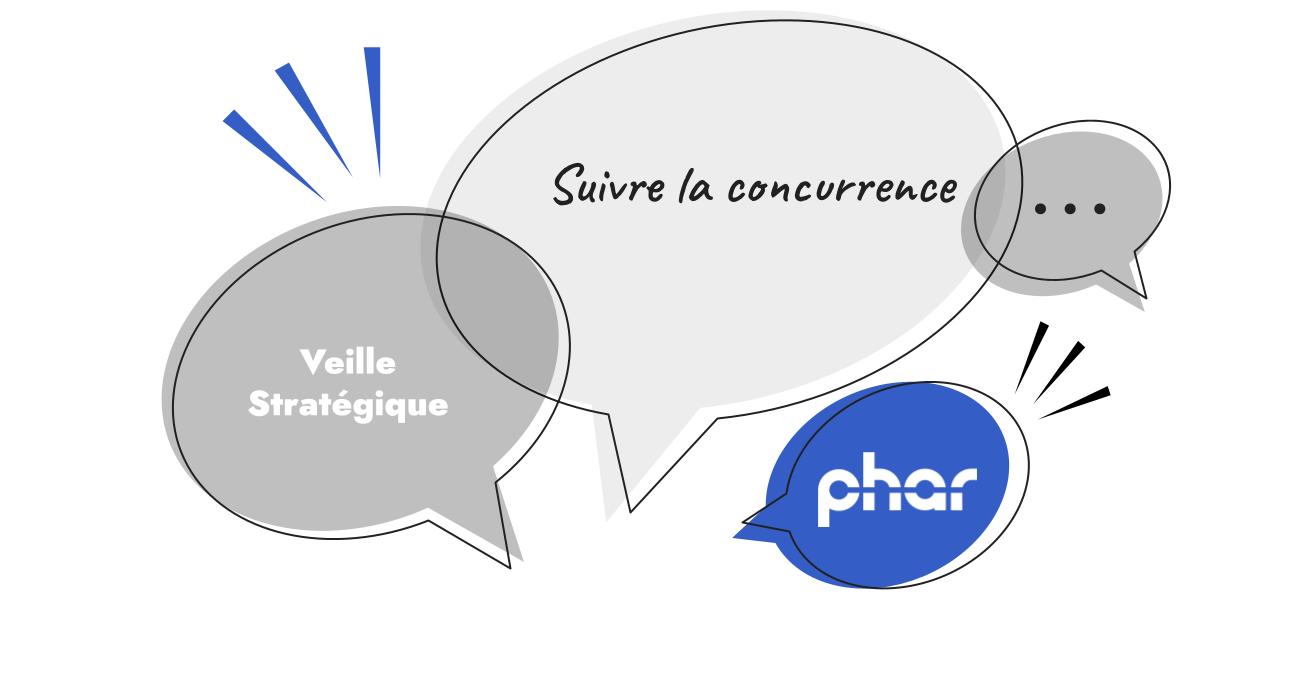Monitoring the competition through a digital comparative analysis or "digital benchmark" is an essential exercise for a successful digital strategy. Indeed, the temptation to embark on a digital strategy and "hope for results, any results" is great. It's mistake number one. Here's why your competitors can waste your time and money.
Find your your place in the market, identify losing battles and real opportunities for advancement.
With the sheer amount of data available on web user behavior combined with the mind-boggling performance of analytics tools, it's pretty simple today to extract some very useful learnings from the competitive landscape. I'd like to highlight three important ones:
- The available place in the market : this aspect is directly related to your positioning. Is it unique or has it already been adopted by others? Also, do the solutions you provide address issues that are the subject of content or research on the web? These elements will feed your content strategy.
- Losing battles in advance : a competitor with an excellent reputation who is aggressively developing in the digital space could cast a shadow over you and render your efforts futile and useless (in short, make you lose money!). It may be wise to identify other ways of setting yourself apart rather than working on the same board.
- Real opportunities : generally speaking, and having understood the available space and ruled out unnecessary battles, it's easier to assess the remaining space and identify positioning opportunities. However, opportunities can be identified in neglected digital channels or in geographic territories not prioritized by your competitors.
Leaders, established, disruptive or niche competitors : which ones will make you lose money?
In order to characterize the competitive landscape, we can classify your competitors into four categories.
- Leaders are those who enjoy notoriety and are gaining visibility. They are often role models who influence content and trends. These players are worth following and can create opportunities in their wake, for those willing to take them on!
- Established competitors are those who also enjoy notoriety, but whose growth in visibility is slowing, nil or even stalling. They are often veterans and the first targets of disruptive competitors.
- Breaking competitors are those who have no notoriety, but whose visibility is growing fast. They are often new players on the market and are disruptive players in their field. They are to be watched very closely.
- Niche competitors are those who don't generate much traffic and whose visibility growth is low. These players may represent competitors who focus on very specific geographic or sector markets, have more of a notoriety than visibility strategy, or simply make mistakes in their positioning.
So, when benchmarking, you can try to identify yourself with one of these categories to properly target competitors who might cast a shadow on you or force you to use strategy to stand out.
What strategies should you employ?
A comparative analysis of this type involves a wide and varied selection of indicators in addition to an objective perspective to highlight opportunities, best strategies and realistic development goals.
An analysis covering organic and paid traffic, social networks, technologies employed, blogs and geographical distribution are minimally required for perspective.
At Phar, we offer this type of competitive intelligence and monitor over 20 indicators continuously for our clients. We offer it to organizations wishing to monitor and understand their digital environment for better strategies and decision-making!
December 7, 2024
